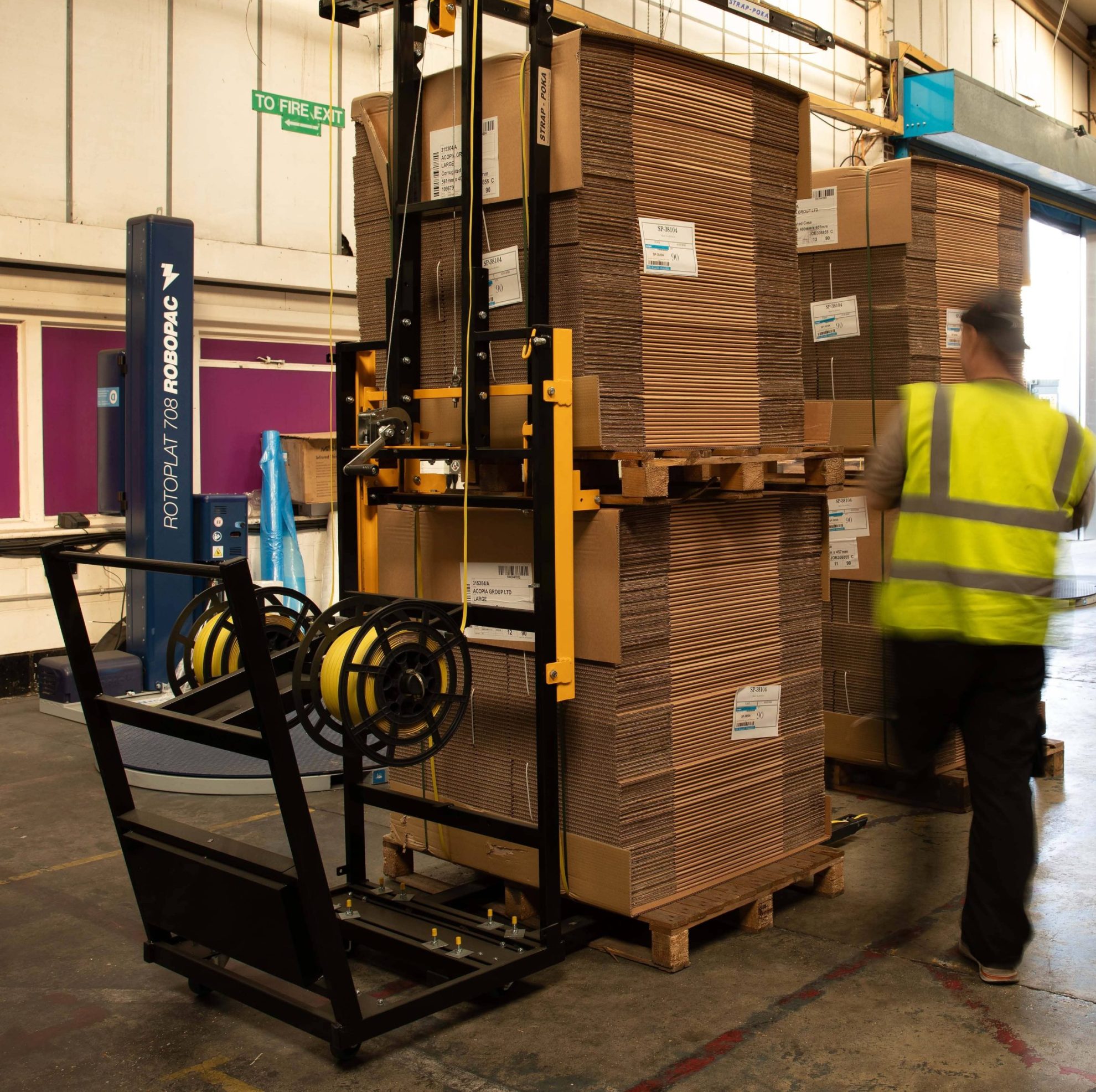Wrapping and strapping products are essential in logistics, manufacturing and industries where the safe and efficient transportation of goods is a core function and requirement. These functions involve the use of materials like pallet wrap or stretch wrap, pallet hoods, pallet top sheets and strapping options that all have a role to play in protecting products on pallets. These protective products ensure wrapped pallets reach their destination in optimal condition.
There are a number of strapping options available on the market, from large pallet strapping equipment that can help secure fully loaded pallets, to smaller convenient machines that can apply strapping in seconds to single cartons and boxes.
A Best In Class product that helps you use less plastic, reduces your costs and eliminates refused or damaged deliveries.
With unparallel load containment, iWrap Machine Wrap supports your green ambitions and journey to lowering your carbon footprint.
An effective and versatile pre-stretched hand wrap that’s fast and easy to apply.
Provides reliable and safe wrapping using the least possible amount of plastic.
Proper wrapping and strapping safeguards products from damage during transit. This is particularly important for fragile or sensitive items and equipment.
Wrapping and strapping materials also provide protection against adverse weather conditions such as rain, snow, or extreme temperatures.
Worker Safety in the workplace is of critical importance. Ensuring products are properly secured reduces the risk of accidents and injuries caused by falling, unstable or shifting goods during the palletisation and loading process.
Securely wrapped and strapped loads minimise the risk of accidents during transportation, ensuring the safety of both drivers and other road users.
Wrapping and strapping reduces product damage and waste which helps your sustainability efforts by minimising the disposal of damaged goods that necessitate repeat deliveries.
The use of eco-friendly pallet wraps, pallet hoods, top sheets and strapping which contain recycled content that can also be recycled, supports environmentally responsible practices.
Properly wrapped and strapped loads are stable, reducing pallet failure during palletisation, loading and transportation.
This stability is crucial for preventing accidents and maintaining product integrity.
Working to Best Practice ensures cost savings right across the process, from using less plastic with high performance film, to reducing pallet failure – as well as a host of carbon footprint savings too.
Using a high performance pallet wrap could shrink your plastic use by half and unlock savings of 30% or more

The box strapping machine is a natural progression from hand strapping and slots seamlessly into your existing despatch operation without fuss. The strapping machine quickly places a length of fastened strapping around cartons which is automatically tensioned as applied. It is an extremely fast and efficient way to make parcels more rigid and robust.
If you have larger parcels that require palletisation, strapping machinery exists to help you make these larger loads more secure. Essentially you can strap these larger cartons directly to a pallet to provide even greater stability and rigidity for products in transport. They work by creating continuous bands of strapping through the slots of the pallet in seconds and are extremely advantages for use on tall pallet loads.
Want a sustainable option?
Customers still requiring sustainable options are in luck as both plastic pallet and box strapping is available with recycled plastic content. Many of our customers use strapping as an extremely cost-effective way to brand their shipments and consignments too.
Speak to one of our packaging experts and find out more.
